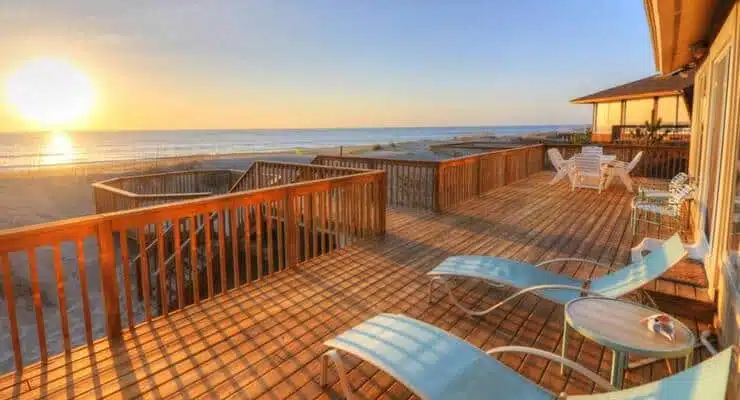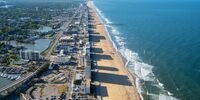Southeastern Virginia is a region rich in historical significance, natural beauty, and vibrant culture, making it a must-visit destination. From the stunning beaches of Virginia Beach to the historic charm of Williamsburg, there’s something for everyone. Virginia Beach offers miles of sandy shores and a lively boardwalk, ideal for sunbathing, dining, and entertainment. In contrast, Colonial Williamsburg provides a glimpse into 18th-century life with its meticulously restored buildings and interactive exhibits.
Norfolk, with its cultural attractions such as the Nauticus Museum and the Norfolk Naval Base, presents a dynamic urban experience. Meanwhile, Portsmouth boasts a quaint waterfront and historic sites. To make the most of your visit, planning is crucial. Consider booking accommodations in advance, especially during peak seasons, and be aware of local events that may coincide with your trip. Additionally, if your travel includes a stopover in another city like Paris, look into practical solutions like luggage storage to enhance your journey. With careful planning and a bit of local insight, your trip to southeastern Virginia will be both enjoyable and memorable.
Understanding Southeastern Virginia
Overview of the Region
Southeastern Virginia includes several notable areas such as Virginia Beach, Norfolk, Portsmouth, and Williamsburg. Each offers unique attractions:
- Virginia Beach: Known for its bustling boardwalk, expansive sandy beaches, and family-friendly activities.
- Norfolk: A cultural hub with museums, a vibrant arts scene, and the Norfolk Naval Base.
- Williamsburg: Famous for Colonial Williamsburg, a living history museum that brings the 18th century to life.
- Portsmouth: Offers a historic waterfront, charming boutiques, and the Naval Shipyard Museum.
Best Time to Visit
The best time to visit southeastern Virginia depends on your interests:
- Spring (March to May): Mild weather and blooming flowers make it an ideal time for outdoor activities.
- Summer (June to August): Warm temperatures and beach access attract tourists, though it can be crowded.
- Fall (September to November): Cooler temperatures and fewer crowds offer a pleasant experience, especially for exploring historical sites.
- Winter (December to February): Generally mild, though some attractions may have reduced hours.
Essential Travel Tips
1. Plan Your Itinerary
Popular Attractions
Before setting off on your adventure, ensure your travel plans are organized. If you have a layover in Paris before reaching southeastern Virginia, consider looking into luggage storage paris options to make your travel experience more comfortable and convenient.
Create a list of must-see attractions to optimize your time:
- Virginia Beach Boardwalk: Stroll along the three-mile boardwalk, enjoy the ocean views, and visit the local shops and restaurants.
- Colonial Williamsburg: Experience historical reenactments, visit restored 18th-century buildings, and engage with costumed interpreters.
- Nauticus Museum: Explore maritime exhibits, including the Battleship Wisconsin, and interactive displays.
Local Events
Check local event calendars before your trip. Festivals, fairs, and seasonal events can offer unique experiences, such as the Virginia Beach Neptune Festival or Williamsburg’s Grand Illumination.
2. Transportation and Getting Around
Renting a Car
Southeastern Virginia is best explored by car. It provides the flexibility to visit various sites and explore beyond the city limits. Major car rental agencies are available at airports and in cities.
Public Transportation
While public transit options exist, including buses and light rail, they may be limited in rural or less-populated areas. Consider using rideshare apps or local taxi services for short trips or specific destinations.
Parking Tips
Parking can be challenging in busy areas like Virginia Beach. Look for:
- Parking Garages: Often located near major attractions and shopping areas.
- Metered Parking: Be mindful of time limits and fees.
- Free Parking Lots: Available in some areas, particularly outside city centers.
3. Accommodations
Types of Lodging
Southeastern Virginia offers a range of accommodations:
- Beachfront Resorts: Ideal for those looking to stay close to the ocean.
- Historic Inns: Found in Williamsburg, providing a charming, period-appropriate experience.
- Urban Hotels: Located in Norfolk and Virginia Beach, offering modern amenities and convenient access to city attractions.
Booking Tips
Book your accommodations well in advance, especially during peak travel seasons. Consider using booking platforms to compare rates and find the best deals.
4. Dining and Cuisine
Local Specialties
Southeastern Virginia’s cuisine reflects its coastal and Southern roots:
- Seafood: Enjoy fresh catches like crab cakes, oysters, and shrimp.
- Southern Comfort Food: Try dishes such as fried chicken, collard greens, and cornbread.
Restaurant Recommendations
- Mahi Mah’s Seafood Restaurant (Virginia Beach): Renowned for its seafood dishes and waterfront views.
- The Fat Canary (Williamsburg): Offers a fine dining experience with a focus on local ingredients.
- The NorVa (Norfolk): A venue offering not only great music but also delicious food options.
5. Cultural Etiquette and Local Customs
Local Traditions
Respecting local customs enhances your travel experience:
- Historical Preservation: Support and respect the efforts to maintain and preserve historical sites.
- Southern Hospitality: Embrace the friendly and welcoming nature of the locals.
Tipping Practices
Tipping is customary in restaurants, bars, and for services like taxis. Aim for 15-20% of the total bill as a standard tip.
6. Safety and Health
Emergency Services
Familiarize yourself with local emergency services:
- Emergency Number: Dial 911 for police, fire, or medical emergencies.
- Healthcare Facilities: Identify nearby hospitals or urgent care centers in case of health issues.
Health Precautions
Southeastern Virginia is generally safe, but it’s always wise to:
- Carry Medications: Bring any necessary prescriptions or over-the-counter drugs.
- Stay Hydrated: Especially if visiting during the warmer months.
7. Shopping and Souvenirs
Local Markets and Shops
Explore local shopping areas for unique finds:
- The Williamsburg Farmers Market: Offers fresh produce and handcrafted goods.
- MacArthur Center (Norfolk): A large shopping mall with a variety of stores.
Souvenir Ideas
Look for items that reflect the local culture:
- Crafts: Handmade jewelry or pottery from local artisans.
- Food Products: Locally made jams, sauces, or specialty foods.
8. Weather and Packing
Packing Essentials
Prepare for various weather conditions:
- Comfortable Clothing: For exploring and outdoor activities.
- Swimwear: If visiting the beach.
- Layers: For cooler evenings or unexpected weather changes.
Weather Considerations
Check the forecast before your trip to adjust your packing list. Bring an umbrella or rain jacket if rain is expected, and sunscreen for sunny days.
Conclusion
Southeastern Virginia offers a rich tapestry of experiences, from its historic sites and coastal beauty to its vibrant urban centers. By following these essential travel tips, you can navigate the region with ease and make the most of your visit. From planning your itinerary to understanding local customs and preparing for the weather, these insights will help ensure a smooth and enjoyable trip. Enjoy your adventure in southeastern Virginia!

















